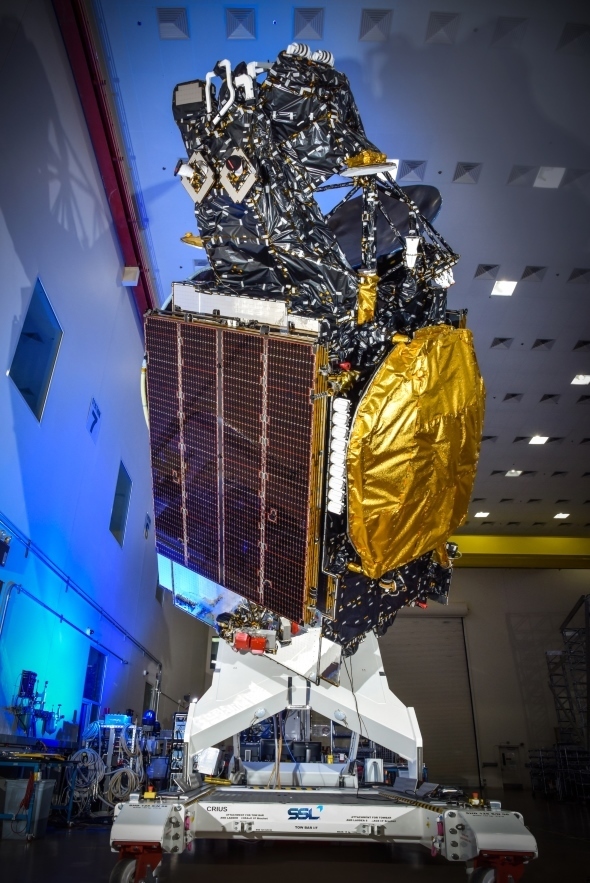As a technology innovator, SSL, a Maxar Technologies company, was one of the first spacecraft providers to use additive manufacturing (also known as 3D printing) on primary structural flight hardware. The launch of Hispasat 30W-6 marks another milestone in the company’s development of highly optimized structures that are enabled by additive manufacturing. The Hispasat 30W-6 antenna tower is the largest and most complex antenna support structure that SSL has completed to date.
The strut-truss design methodology used on the satellite, which brings a range of communications services to Europe, the Americas, and North Africa contains more than 200 carbon fiber composite struts, making it three times the size of the first strut-truss tower that SSL launched in late 2016. More than 200 additively manufactured metal and polymer components were incorporated throughout Hispasat 30W-6 including 3D printed nodes that enabled the antenna tower design. The utilization of this technology improved the overall assembly schedule, performance, and operational lifetime for the spacecraft.

Hispasat 30W-6 was designed with multiple payloads in Ka, Ku, and C-bands, which will be used to help bridge the digital divide in North Africa, Latin America, and the Iberian Peninsula. It will provide quality Internet access in rural areas, on high-speed trains, and for ships at sea in the Caribbean and Mediterranean. It will also strengthen the distribution of information and entertainment in Latin America, enabling television access for over 50 million users.
Combining a highly optimized design with advanced manufacturing techniques enabled SSL to reduce mass and maintain structural integrity of the tower. With ongoing encouragement from Hispasat, the dedicated team at SSL spent many late nights, iterated multiple designs, and consumed countless cups of coffee in order to successfully execute such an ambitious project. Ultimately, the strut-truss tower had less than half of the mass of a traditional composite panel structure and reduced assembly time.
SSL finds Hispasat to be an exceptional partner for satellite technology innovation. Hispasat 30W-6 integrates several design advances including the highly optimized antenna tower. Our use of advanced technologies such as additive manufacturing has helped SSL stay at the forefront of spacecraft design in order to enable satellite operators to offer high quality and market competitive services.
This is just one example of how SSL and the other Maxar Technologies companies are accelerating innovation for the new space economy. Accelerating innovation means bringing technologies and capabilities together at a much faster pace, driving solutions that improve performance, remove complexity, and realize economic benefits. With an eye to the future, the SSL team continues to innovate in order to meet the goals of future spacecraft missions.
